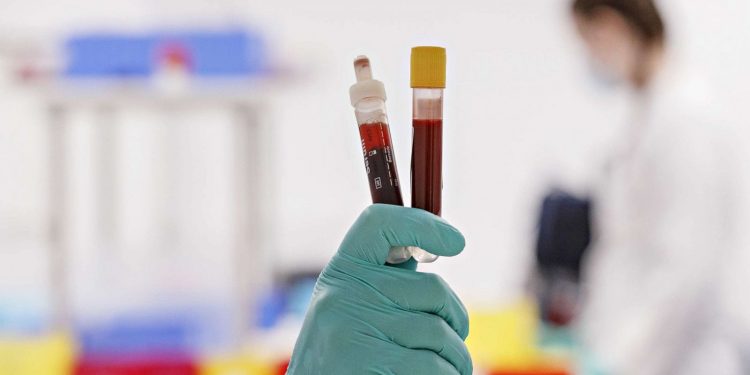Researchers, including an Indian-origin, have identified an advanced nanomaterial-based biosensing platform that detects, within seconds, antibodies specific to SARS-CoV-2, the virus responsible for the COVID-19 pandemic.
In addition to testing, the platform will help to quantify patient immunological response to the new vaccines with precision, according to a paper published in the journal Advanced Materials.
“We utilized the latest advances in materials and manufacturing such as nanoparticle 3D printing to create a device that rapidly detects COVID-19 antibodies,” said researcher Rahul Panat, Associate Professor at Carnegie Mellon University in the US.
The testing platform identifies the presence of two of the virus’ antibodies, spike S1 protein and receptor-binding domain (RBD), in a very small drop of blood (about 5 microliters).
Antibody concentrations can be extremely low and still detected below one picomolar (0.15 nanograms per millilitre). This detection happens through an electrochemical reaction within a handheld microfluidic device which sends results almost immediately to a simple interface on a smartphone.
According to the researchers, an additive manufacturing technology called aerosol jet 3D printing is responsible for the efficiency and accuracy of the testing platform. Tiny, inexpensive gold micropillar electrodes are printed at the nanoscale using aerosol droplets that are thermally sintered together.
This causes a rough, irregular surface that provides an increased surface area of the micropillars and an enhanced electrochemical reaction, where antibodies can latch on to antigens coated on the electrode. The specific geometry allows the micropillars to load more proteins for detection, resulting in very accurate, quick results.
The test has a very low error rate because the binding reaction between the antibody and antigen used in the device is highly selective. The researchers were able to exploit this natural design to their advantage.
The results come at an urgent time during the COVID-19 pandemic. “Because our technique can quantify the immune response to vaccination, it is very relevant in the current environment,” Panat said.
IANS






































